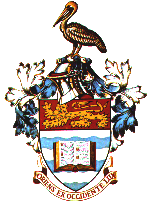![]()
![]()
![]()
![]()
![]()

![]()
![]()
![]()
![]()
![]()
- the transfer of genetic material between organisms by means of extracellular pieces of DNA. Fragments of free DNA are taken up by a living bacterium, ,bringing about a stable genetic change in the recipient cell. First observed by Griffith in 1928 in S. pneumoniae and in 1944 Avery and colleagues showed that DNA was responsible.
Transformation is usually used to map genes in bacterial species in which mapping by other methods is not possible. DNA from a donor bacterial strain is extracted and purified. The extraction process breaks the DNA into small, linear dsDNA fragments and this is added to a suspension of bacteria with a different genotype. The donor DNA that is taken up by a recipient cell may recombine with homologous parts of the recipient's chromosome to produce a recombinant chromosome. Those recipients whose phenotypes are changed by a recombination event are called transformants. Only of there are genetic differences between donors and recipients will transformants be detected.
It is possible to determine gene linkage, gene order and map distance through transformation. If two genes, x+ and y+, are far apart on the donor chromosome, they will always be found on different DNA fragments. Thus, given a donor, x+ y+, and a recipient, x y, the probability of simultaneous transformation (cotransformation) of the recipient to x+ y+ is the product of the probability of transformation with each gene alone. Genes that are close enough to each other to be cotransformed are sometimes said to be linked (note different usage meaning "in close proximity", not "on the same chromosome").
If transformation occurred at a frequency of 1/103 cells per gene, x+y+ transformants would be expected to appear at a frequency of 10- 6 recipient cells. Therefore, if two genes are close enough that they are often carried on the same DNA fragment, the cotransformation frequency would be close to the frequency of transformation of a single gene. If the frequency of cotransformation of two genes is substantially higher than the product of the two individual transformation frequencies, the two genes must be close together.
In 1954 Rollins Hotchkiss and Julius Marmur experimenting with pneumococcus showed transformation at two loci, str and mtl. Recipient cells were strS and mtl- (streptomycin sensitive and could not ferment mannitol). Donor cells were strR and mtl+. If these genes are unlinked, simultaneous transformation for both genes should be extremely low. In the experiment, the rate was 0.17%.
In a second experiment, a mixture of strR mtl-and strS mtl+ DNA was used as donor. Both the strR and mtl+ were available to the recipient, but on separate pieces of DNA. The number of double transformants 25 times fewer than in the first experiment, thus confirming close proximity of the genes.
Table 10.1 Results of several transformation experiments, which establish linkage between the str and mtl loci in Pneumococcus
|
Donor DNA |
Recipient cell genotype | Percentage of Transformed Genotypes | ||
| strR mtl- | strS mtl+ | strR mtl+ | ||
| strR mtl+ |
strS mtl- |
4.3 | 0.40 | 0.17 |
| strR mtl+
and strS mtl- |
2.8 | 0.85 | 0.0066 | |
Gene order can also be determined from cotransformation data. Consider genes p+, q+ and r+ in a donor whose DNA is used to transform a recipient, pBqBrB .
Fig 8.4, Russell
If genes p and q are often transmitted to the recipient together, then these two genes must be relatively closely linked. Similarly, if q and r are often transmitted together, those two genes must be close to one another. There are two possible gene orders: p-r-q and p-q-r. If the order is p-r-q, then p and r should be cotransformed because they are more closely linked than p and q, whereas if the order is p-q-r then p and r should be cotransformed rarely or not at all because they are relatively far apart.
This template created by the Web Diner.